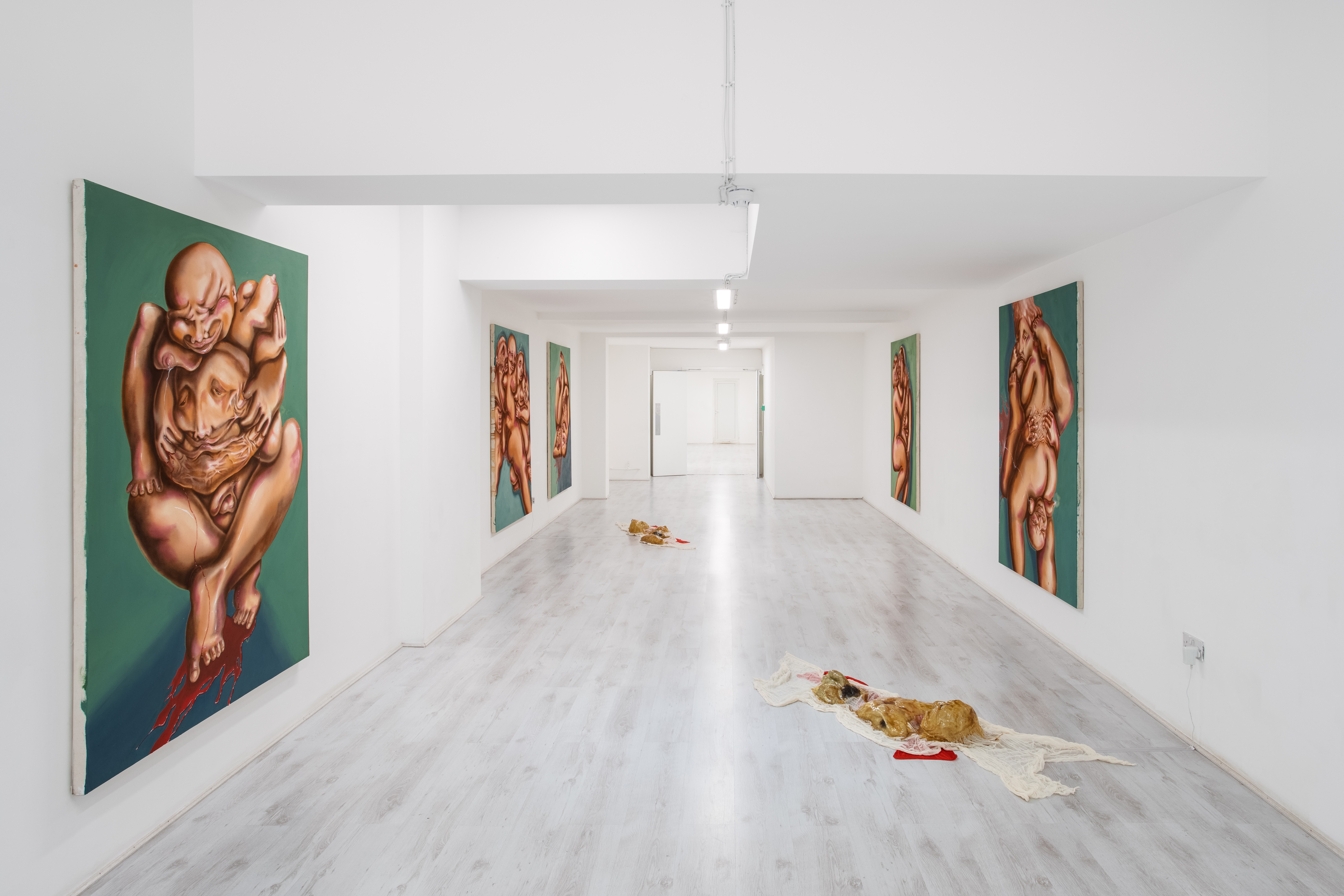Exhibition Text
Elsa Rouy: A Demon in a Sundress
Guts Gallery, London
Written on the occation of A Demon in a Sundress, a solo exhibition of new works by Elsa Rouy presented by Guts Gallery, London (19 — 26 August 2021).
Her second solo show with Guts Gallery, Rouy exhibited five paintings and two sculptures, accompanied by an original poem. Influenced by personal experiences, these works were a culmination and evolution of themes explored throughout her practice.
Rouy activated the space further, suffuse with scents of Geranium, Ylang Ylang, Jasmine and Neroli, to form a disturbing and displaced narrative echoing longing, child-like dependency and a parasitic undertaking of relationships.

Extract —
“ Standing in front of the amorphous and devouring bodies that populate the work of Elsa Rouy, without question we are brought closer to this contradictory impulse. Writing in her seminal work of feminist psychoanalysis, The Powers of Horror, Julia Kristeva gave name to this formative and ambiguous tormentor: “The abject. It is something rejected from which one does not part, from which one does not protect oneself as from an object. Imaginary uncanniness and real threat, it beckons to us and ends up engulfing us.” Exemplified in the undulating currents of spittle, menstrual blood and sexual discharge that flow between Rouy’s weightless figures, the abject is that which troubles subjecthood, disrupting categories of self and other — it is a phantasmic substance not only alien to the subject but intimate with it.
These bodily fluids, not only are they horrific through their association with the maternal body made strange, even repulsive, through repression, but “this defilement, this shit is what life withstands, hardly and with difficulty, on the part of death.” The climax of abjection, for Kristeva, is moreover when the prospect of death intersects directly with its antithesis: the innocence and vitality of childhood. Displayed in a deliberate and rhythmic sequence, Rouy’s androgynous and infantile protagonist writhes between these two transformative states. They are at once the suckling newborn — bound to its surroundings by an inverted umbilical cord of physical penetration and gushing amniotic fluids — as they are the threatening presence of contagion, disease and addiction. The room itself is suffuse with scents of Geranium, Ylang Ylang, Jasmine and Neroli, at once subtle and beautiful as they are a visceral metaphor for viral transmission and mortality.
The image of arrested childhood is repeated throughout A Demon in a Sundress, first as bald and glossy textures of skin that stretch and contort across canvas, and second as a series of latex sculptures collapsed lifelessly on the ground — an image of the body turned inside out, of the subject literally abjected, thrown out. Rouy’s figures point to the gap that exists between our imagined and actual body-images, against fascist regimes of the perfect body and the reality of misrecognition that we attempt to fill with entertainment images and fashion models every day and every night of our lives. In either case, it is certainly true that Rouy’s work engages with and excites the politics of the gaze. To be sure, the masculine perspective is subverted. However, it is the feeling that the gaze itself has been problematised, made obscene or obliterated, that is paramount; as if the abject were weaponised or given agency over us, looking back at us through the work. In the words of Hal Foster, the abject reveals itself here “as if there were no scene to stage it, no frame of representation to contain it, no screen.”
